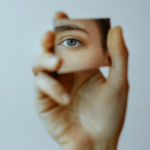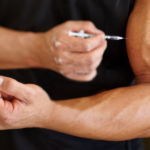Having something about your appearance you don’t like or would prefer change is normal from time to time but when a perceived “flaw” becomes a fixation that causes significant distress and impacts your daily life, it could be a sign of body dysmorphic disorder (BDD).
Here’s what you need to know about the condition, how it impacts men and the signs you or someone you know might be struggling with it.
What is body dysmorphic disorder?
BDD is a mental illness that’s characterised by persistent and intrusive preoccupation with a part of your body, whether that’s facial features, body hair, skin complexion, hair loss, penis size or musculature.
It affects one in 50 people, and despite public perception of body image issues predominantly impacting women, BDD is just as common in males as in females.
It’s not shallow or trivial — males with BDD are more likely than normal to have anxiety, depression, emotional and behavioural problems, relationship troubles, hyperactivity and low quality of life.
When these problems occur during your teenage years, they can have long-term consequences for how you think and act. It can also lead to extreme action to hide or fix your appearance.
“Some think, ‘oh well, that’s just vanity, how can this be a serious issue?’ It’s a hugely serious issue,” says psychiatrist Dr David Castle. “It has one of the highest suicide rates of any disorder — it’s a tragedy, it strikes young and it’s persistent and enduring.”
Individuals diagnosed with BDD are four times more likely to experience suicidal ideation and 2.6 times more likely to engage in suicide attempts compared to individuals without BDD.
What is muscle dysmorphia?
Muscle dysmorphia (MD) is a type of BDD in which people — predominantly male — see themselves as not muscular enough.
People with muscle dysmorphia can go to dangerous lengths to build muscle with strict diets, excessive exercise and the abuse of anabolic steroids.
These behaviours can make the condition difficult to recognise because eating well and working out are considered healthy in moderation and the pursuit of bigger muscles has been normalised by the media.
It’s not always easy to determine the point when healthy habits become problematic.
“It seems like all of these are, in moderation, healthy behaviours but it’s when they go over that line,” psychiatrist Dr David Castle says. “Start asking, does it impair your functioning? Does it restrict your ability to live other aspects of your life?”
Illegal androgen abuse can also have long-term physical and mental health impacts including cardiovascular disease, liver and brain damage, muscle breakdown and infertility.
Signs of body dysmorphic disorder and muscle dysmorphia in men
Men with BDD and MD don’t realise that their beliefs about their appearance are inaccurate and may not know they have a serious but treatable condition. Often family or friends can be the first people to raise the issue.
Seeking help to change the appearance of the part of your body you are concerned about, for example, through cosmetic surgery.
What causes body dysmorphic disorder?
We don’t fully understand why some people get BDD and some don’t, but genetic, psychological and social factors contribute.
BDD is more likely than usual to occur in people who have a mother, father, sister or brother with the disorder.
“Whether that’s actually genetic or whether it’s just due to the family putting particular value on appearance,” Dr Castle says.
“If your parents are putting a lot of emphasis on their own appearance and keep on talking to you about how you look, it’s going to be difficult to not fall into that trap.”
People who have experienced childhood trauma or bullying are also at greater risk than normal of developing BDD.
“A lot of the people who I see with body image problems have a memory of being teased about their appearance,” Dr Castle says.
How is body dysmorphic disorder treated?
Men tend to be quieter about their body negativity, seeking treatment less frequently or holding off on treatment due to shame and stigma.
However, seeking help is critical as BDD is very unlikely to go away on its own and can have devastating impacts on your life.
The behaviours associated with BDD can be reduced by seeing a psychologist or psychiatrist for cognitive behavioural therapy, sometimes in combination with medication.
If the people close to you are concerned about you, it might be worth seeing a doctor to rule out the condition, rather than living with a problem you can’t see, that could be treated. Learn more about BDD here.













